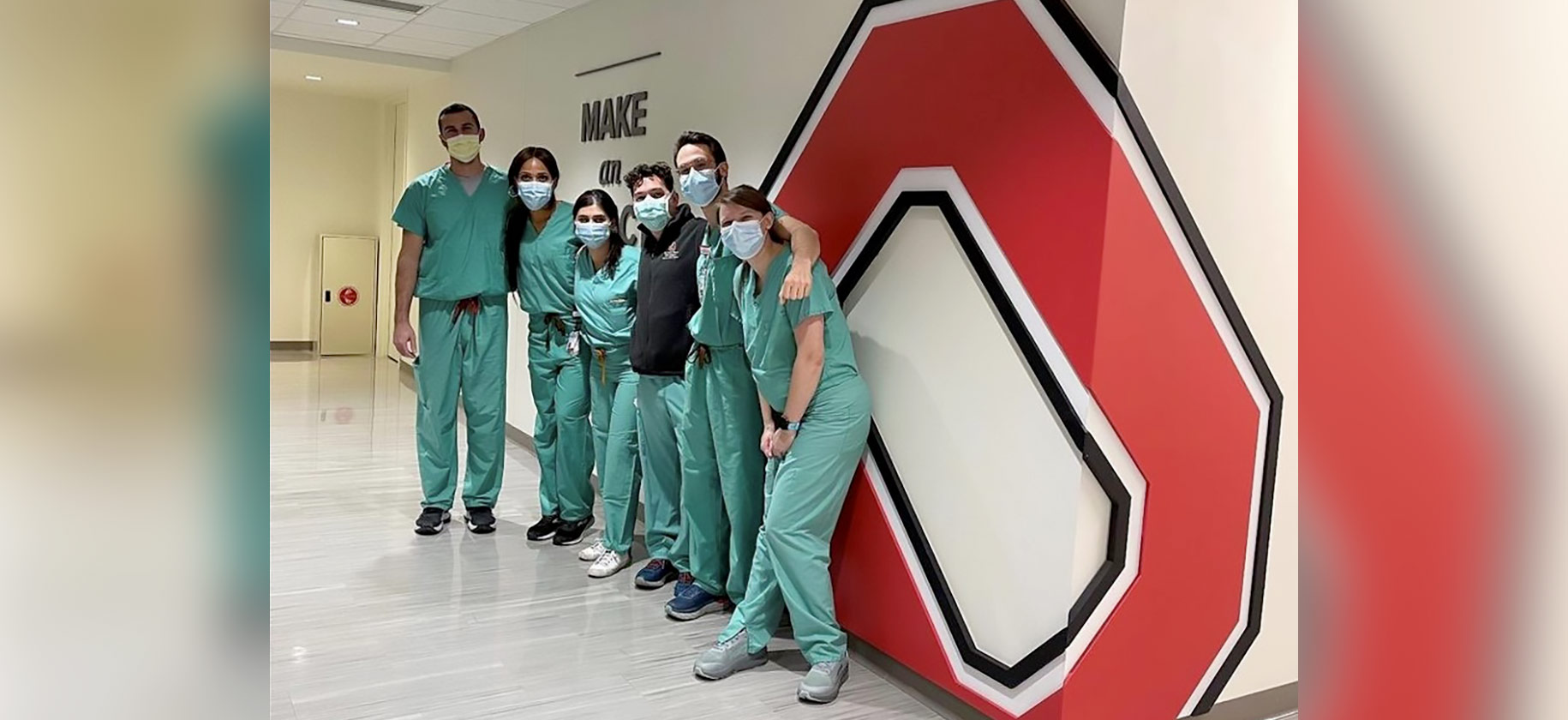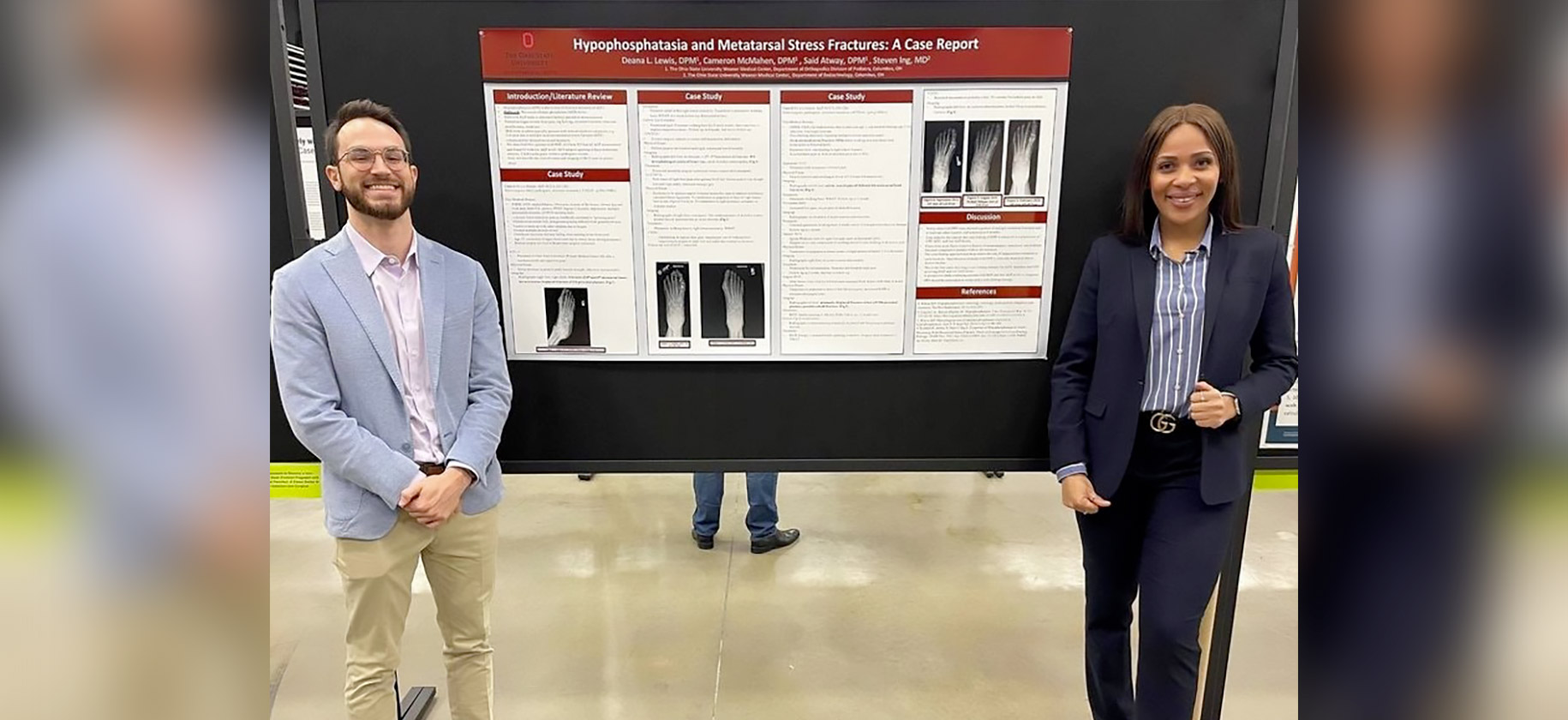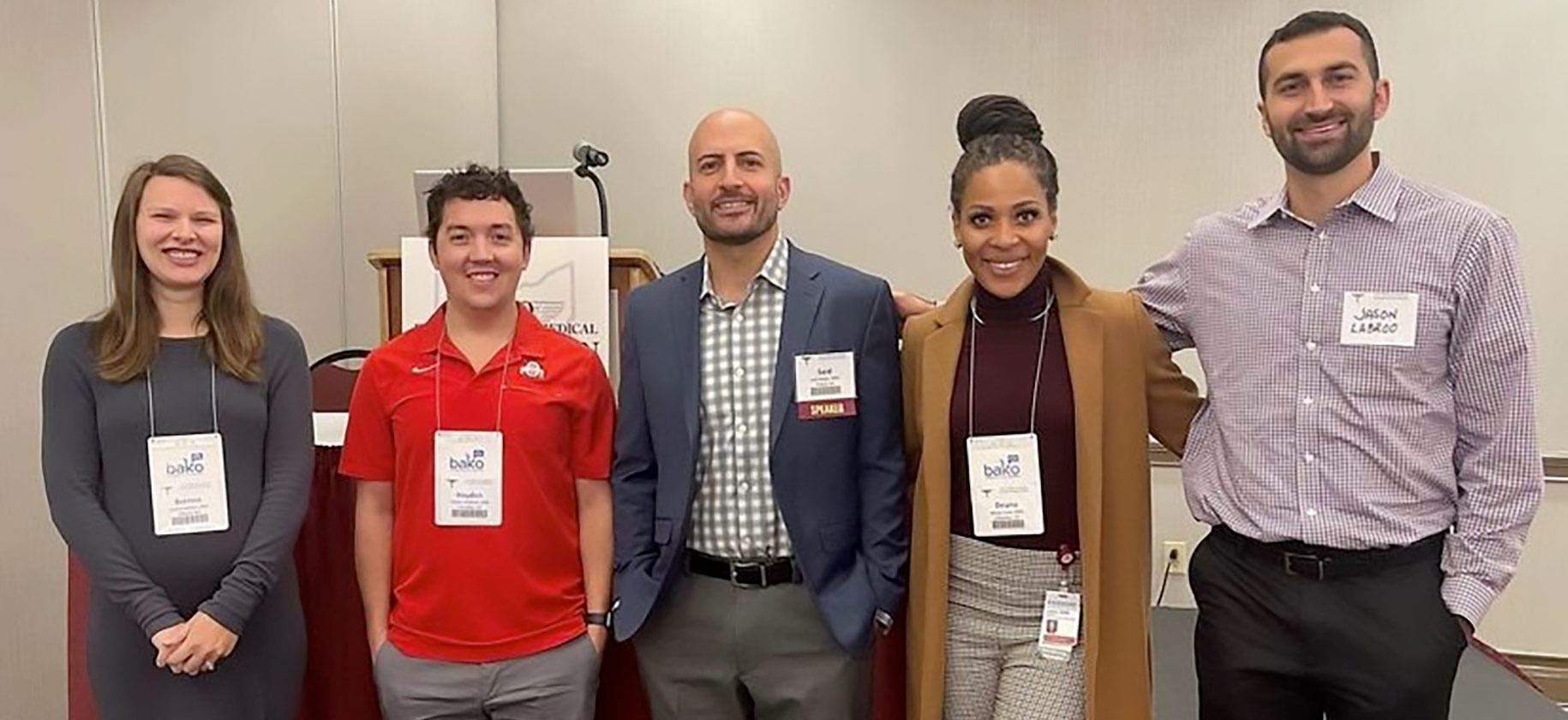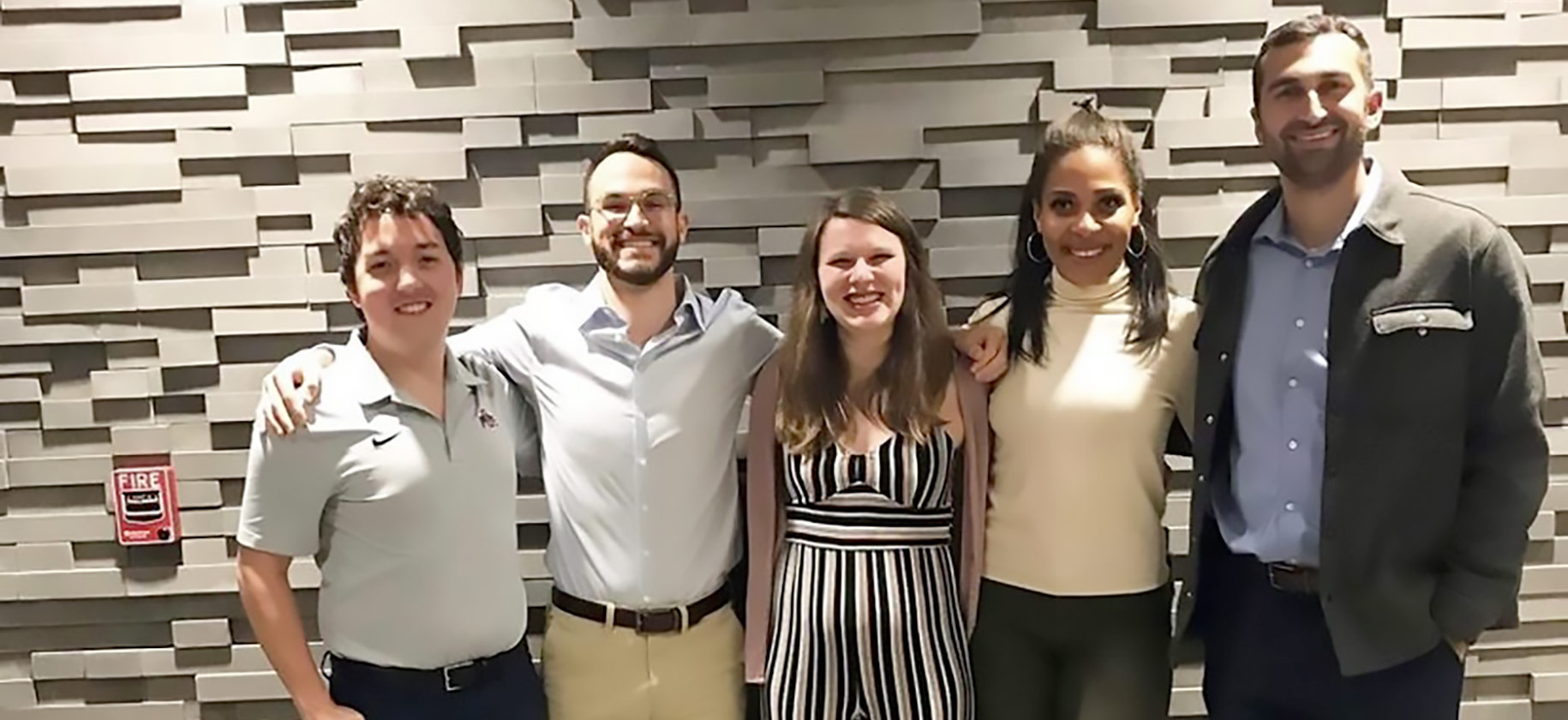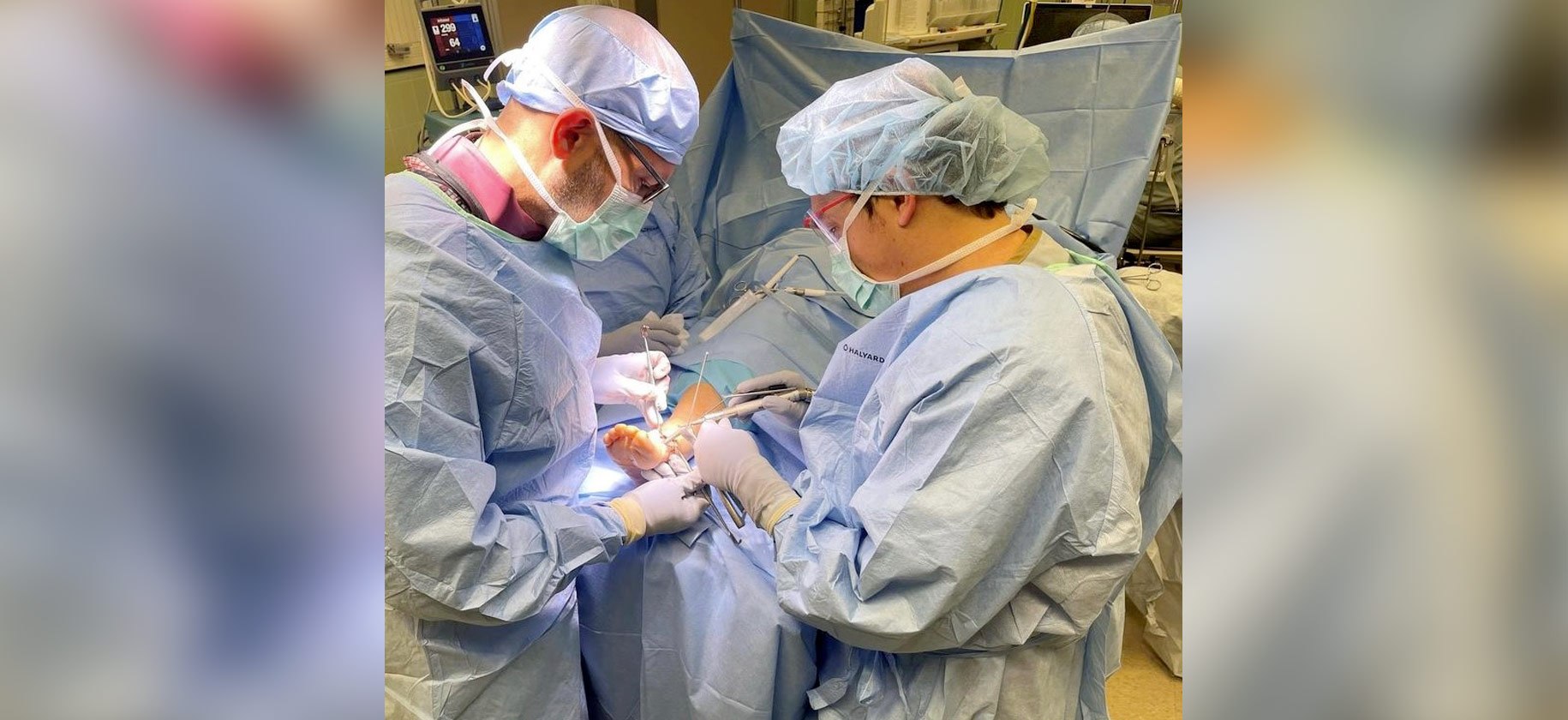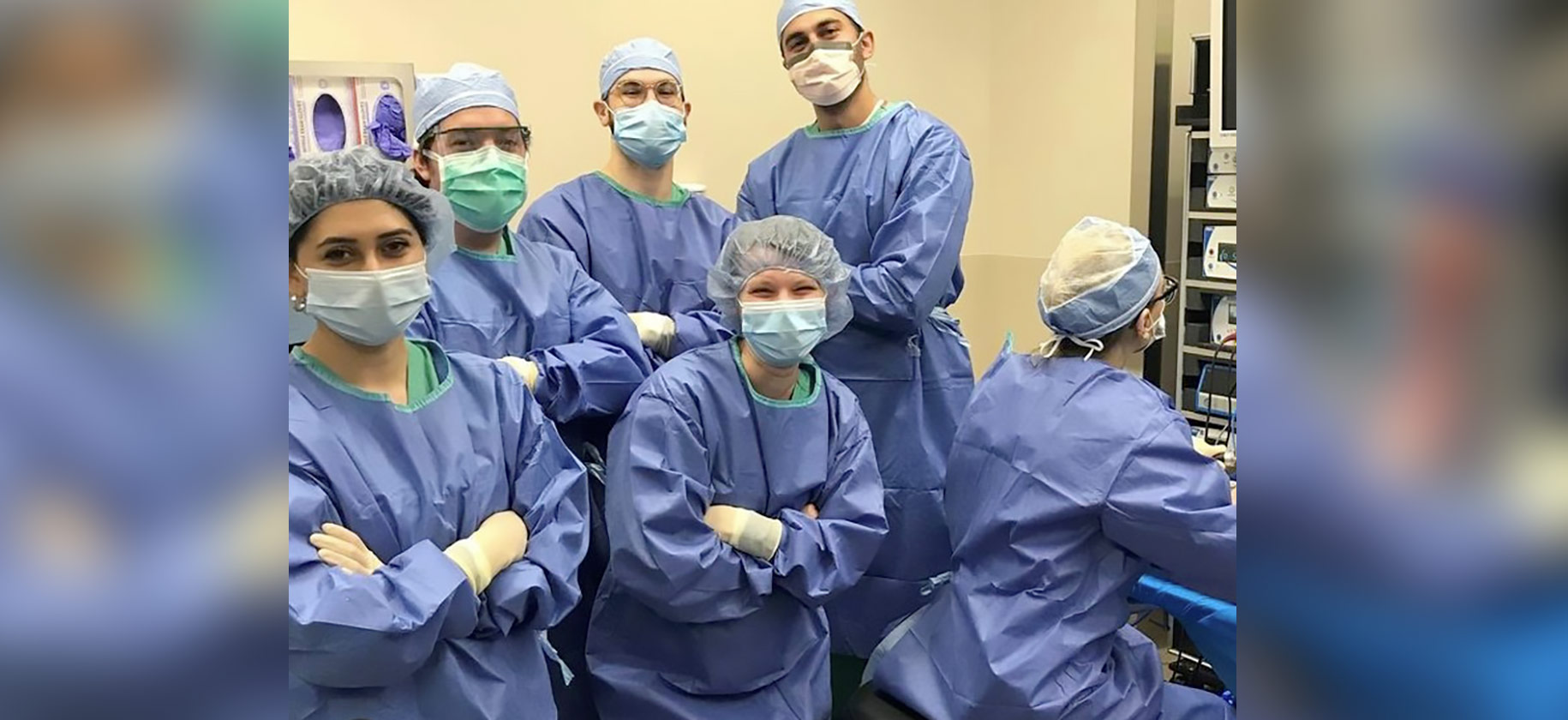About the Program
 The Ohio State University is accredited by the Council on Podiatric Medical Education to offer a residency program in podiatric medicine and surgery/reconstruction of the rear foot and ankle. The program is three years in length. We are accredited to accept two residents each year, for a total of six residents.
The Ohio State University is accredited by the Council on Podiatric Medical Education to offer a residency program in podiatric medicine and surgery/reconstruction of the rear foot and ankle. The program is three years in length. We are accredited to accept two residents each year, for a total of six residents.
The Podiatric Residency at The Ohio State University Wexner Medical Center provides the recent graduate with the opportunity to gather experience in a general podiatric practice and to study advanced and related sciences essential for the practice of podiatric medicine. The teaching program will attempt to demonstrate to the resident a more effective method for improving community foot health and to better prepare the resident for his or her position in the total community health structure.
Program director: Said Atway, DPM
Podiatry Residency
Program Objectives
The Ohio State University Department of Orthopaedics and Division of Foot and Ankle Surgery will educate residents, who, upon completion of the three years of training should exhibit the knowledge and psychomotor skill concerning foot and ankle surgery equal to an orthopaedic surgeon fellowship trained in foot and ankle surgery. The goal of the PGY1 year is to prepare the resident for two years of intensive training in podiatric surgery.
Rotations during the first year include endocrinology, rheumatology, pathology, medical imaging, trauma, anesthesia, vascular surgery, family medicine and podiatric medicine. All rotations are under the guidance of The Ohio State University faculty and will include a large volume of clinical work in each specialty. There will be limited surgical exposure during the PGY1 year.
The PGY2 year is spent exclusively with podiatric faculty at The Ohio State University. A large exposure to the clinical and surgical setting will provide an environment and knowledge base to stimulate academic and research pursuits. The PGY3 year is spent rotating between podiatric and orthopaedic surgeons specializing in foot and ankle. The goal is to maximize knowledge and perfect psychomotor skills.
Residency Resources
Web-based and PDA-based applications are available to podiatric residents for entering their activity and clinical logs, and viewing various calendars. The web-based application may be used instead of, or in conjunction with, the PDA-based application. Data entered in the PDA-based application are synchronized with data in the web-based application.
You can find information about downloading and installing the PDA-based application as well as a user manual for the web-based application on the Podiatry Residency Resource website.
Research Requirements
It is recognized that productive research takes time. It must also be recognized that while research is mandatory, adequate clinical performance takes precedent. Over the course of the residency, partial afternoons may be available to residents for their research efforts. At no time can a resident allow his or her research requirements to interfere with the clinical responsibilities of the program.
The scope and detail of a particular resident’s project may depend somewhat on that resident’s clinical standing. Although each resident is able to select his or her own project, its scope and duration may be shaped by the program director, or at the recommendation of the academic committee based on the resident’s clinical and academic performance. On the other hand, if a resident is performing at an outstanding level clinically, then he or she can be given increased latitude and technical assistance in order to perform more complex and demanding research. This may involve up to one full day per week for research.
Residents are encouraged to meet at least quarterly with faculty advisors and research faculty to ensure the quality of the project. Participation in the monthly orthopaedic research meetings is encouraged.
Resident participation in research is a driving force behind the academic productivity of the Department of Orthopaedics and is supported and encouraged to the full extent of the available resource. The Podiatric Residency Program is excited to be part of research endeavors and participates in the Mallory-Coleman Day presentations. A number of resources devoted specifically to research are available to residents. For more information, view our Research Facilities.
Application and admissions process
Applications and selection of trainees for entry into the program will be through participation in Central Application Service for Podiatric Residencies (CASPR) in accordance with the CPME 320 document guidelines which are the standards, requirements and guidelines for approval of residencies in podiatric medicine. This service, sponsored by the American Association of Colleges of Podiatric Medicine (AACPM), submits residency applications, letters of reference, official transcripts and personal statements to residency program directors. Please refer to CASPR/CRIP web page for information and instructions.
The program will match two residents into the Podiatric Medicine and Surgery Residency with added credentials in reconstructive rearfoot/ankle surgery through the CASPR Match process.
Approximately 25-30 applicants will be selected for an interview. We will be participating in CRIP in January 2025.
As stated in CPME 320 standard 2.3
“The process of interviewing, selecting and appointing podiatric medical college graduates shall be conducted equitably and in accord with ethical standards. An institution that sponsors more than one podiatric residency program shall inform the prospective resident of the selection process established for each program. An institution that sponsors an entry-level candidate status and/or an approved entry-level residency program shall participate in a national resident application matching service (such as is operated currently by the American Association of Colleges of Podiatric Medicine). The sponsoring institution shall not obtain binding commitment from the prospective resident prior to the match results announcement.”
No interviewee will be required to divulge to the program how they ranked the program. Offers will be made to the candidates that match with the program. Candidates outside of the CASPR application process will not be considered unless or until the program does not match. There is no application fee required to apply to this program.
Salaries and Benefits
Benefits provided by Department of Orthopaedics.
The following benefits are provided to limited medical staff (residents and fellows):
- Three weeks paid vacation
- One week professional leave with pay for attendance at a national or international conference
- Reimbursement for attendance at above conference

